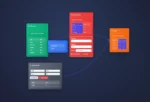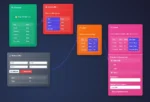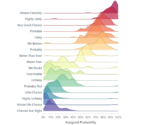Imagine your team diligently building innovative solutions, utilizing powerful analytics and cutting-edge data insights to drive critical business decisions. But alongside innovation, one foundational element must never be compromised: data security. Especially when replicating production databases into non-production environments, such as testing, development, or sandbox settings, teams may inadvertently expose sensitive customer or organizational data. Metadata-driven data obfuscation emerges as a leading strategy to balance the scales between innovation, compliance, and security. Let’s delve into this transformative approach, explore methodologies, and discuss how proactively integrating metadata-driven obfuscation techniques can empower your software development pipeline—fostering smarter decisions, a safer governance model, and paving a secure pathway toward analytics excellence.
Understanding the Importance of Non-Production Data Obfuscation
Non-production environments often mirror the production databases to ensure developers can accurately test and implement functionalities. However, failing to obfuscate sensitive data during these transfers poses substantial security risks. Breaches occurring due to non-production datasets can expose Personally Identifiable Information (PII), Protected Health Information (PHI), or financial information resulting in reputational harm, regulatory fines, and loss of client trust.
To mitigate these risks effectively, metadata-driven data obfuscation offers a robust approach. Unlike traditional data scrambling, this method leverages data characteristics or data contract-driven development processes—defining metadata attributes that clearly identify sensitive columns across databases. By systematically categorizing and flagging data elements via metadata, further automation and accuracy become achievable, providing efficient, secure data masking.
Implementing metadata-driven obfuscation ensures that teams have clear governance protocols, explicit guidelines, and well-defined responsibilities to consistently protect sensitive data. It elevates your company’s information confidentiality and regulatory alignment, driving innovation without compromising compliance.
A Deeper Look into Metadata-Driven Obfuscation Methodologies
So what exactly comprises metadata-driven obfuscation methodologies? At its core, this approach uses metadata—information describing your data—to identify precisely what requires protection. Inspecting metadata enriches data catalogs or repositories to tag fields that necessitate masking such as social security numbers, emails, and financial data. This structured approach simplifies maintenance and dramatically improves scalability across large datasets and multiple development environments.
Effective metadata-driven obfuscation typically follows these sequential phases:
Metadata Discovery and Tagging
The starting point involves automated or manual processes that scan database schemas, alter table structures, and dig into comprehensive system documentation. During this discovery process, sensitive columns and tables are marked explicitly with actionable metadata labels. By marking metadata once, data teams create a reusable, standardized mapping mechanism, significantly reducing redundant activities and minimizing manual errors.
Defining Masking Rules Driven by Metadata
Once the sensitive columns are clearly labeled, masking rules are established based explicitly on this metadata. Such rules stipulate how data masking should be carried out—whether through scrambling algorithms, numeric replacements, or synthetic data generation methods. Coupling clear definitions and standardized metadata enables data teams to rapidly automate and apply safeguards consistently and correctly across entire datasets.
Automated Masking Execution
Finally, automated metadata-driven algorithms execute obfuscation based on predefined rules. Utilizing metadata to inform data pipelines or specialized obfuscation tools ensures your non-production environments dynamically maintain privacy standards, allowing for quick and compliant replication procedures.
How Metadata-Driven Obfuscation Enhances Innovation
Metadata-driven obfuscation doesn’t hinder innovation but substantially facilitates it. For teams at the forefront of analytics-driven decisions—where speed, agility, and feedback matter—this method aligns with modern agile data environments. By incorporating these methodologies, developers and testers benefit from realistic test datasets, without exposure to sensitive, production-level data.
Consider a scenario involving machine learning for fraud detection. Accurate experimentation and training require realistic scenarios and data patterns. Metadata-driven obfuscation provides representative datasets retaining statistical relationships and trends necessary for effective analysis without compromising privacy. By maintaining data realism, teams maximize effectiveness, translating seamlessly into powerful analytical insights and successful models, without security repercussions.
Furthermore, metadata-driven obfuscation pairs effectively with innovative practices like implementing animated transitions in dashboards, or expedient data ingestion pipelines such as dynamically transferring data from platforms like Instagram to BigQuery with Node.js. Secure data preparation enriches user experience design, dashboard insights, and granular analytics, empowering developers and data scientists to advance rapidly at the intersection of secure and intelligent analytics.
The Role of Automation and AI in Metadata-Driven Obfuscation
Automation is foundational to effective metadata-driven obfuscation. Leveraging AI-powered algorithms and smart automation strategies dramatically enhances speed, accuracy, and scale. AI-driven data cataloging solutions intelligently identify sensitive data attributes, mitigating human oversight or inconsistency inherent to manual processes. These solutions use machine learning-driven techniques similar to those explored in our article on pattern spotting in fraud detection.
Beyond improving accuracy in sensitive data classification, leading teams increasingly adopt automation in the obfuscation execution stages using high-performance code generation for data transformations. These AI-powered code-generation strategies further streamline and accelerate obfuscation processes, offering near real-time data protection and integration into continuous integration/continuous delivery (CI/CD) pipelines. Adopting AI-driven enhancements within metadata-driven methodologies fortifies your entire software lifecycle and accelerates development cadence significantly.
If considering nascent AI automation opportunities to fit within your strategic data plans, leveraging our advanced AI agent consulting services can transform your metadata-driven obfuscation approach. Guided by experienced expertise, your teams can scale securely, automate efficiently, and innovate confidently.
Challenges and Recommendations for Implementing Metadata-Driven Obfuscation
Adopting metadata-driven obfuscation comes with strategic considerations and operational challenges. Initially, accurate metadata identification and classification can pose complexity, particularly within organizations not familiar with meticulous data cataloging. Additionally, ongoing maintenance and agility within rapidly-evolving data environments require cross-team alignment and robust data contract-driven development practices.
To address these implementation challenges effectively:
- Ensure organizational commitment to standardized data governance processes, leveraging industry best practices and frameworks.
- Design clearly documented data security guidelines and enforce accountability around metadata stewardship roles.
- Cross-collaborate among business, technical, and compliance stakeholders, aligning metadata-driven strategies with operational requirements and priorities.
- Regularly review and refine metadata frameworks, adapting dynamically to changing data characteristics and evolving privacy regulations.
Addressing these potential challenges head-on positions your organization uniquely at the intersection of secure practices and innovative advantage within modern software environments.
Conclusion: Higher Standards, Enhanced Innovation, Smarter Analytics
In an era characterized by continually heightened privacy scrutiny, regulatory compliance, and data-driven innovation, metadata-driven data obfuscation emerges as a critical strategy for safeguarding sensitive information within non-production environment datasets. It leads your organization towards greater assurance in data protection and compliance practices, improved efficiency through automation, and increased speed to analytics-driven value.
Whether you’re manually curating complex data warehouse structures, utilizing SQL commands like GROUP BY aggregation, exploring JavaScript for front-end analytics (check these JavaScript insights), or integrating AI-driven code generation, metadata-driven obfuscation will consistently raise your organizational analytics standard safely and sustainably. By proactively integrating metadata-driven data obfuscation methods, companies confidently maintain data security while capitalizing on analytics’ transformative power.
Take the next strategic step by aligning your data practices with metadata-driven methodologies—unlocking innovation potential while safeguarding your strongest strategic asset: data.
Thank you for your support, follow DEV3LOPCOM, LLC on LinkedIn and YouTube.



















